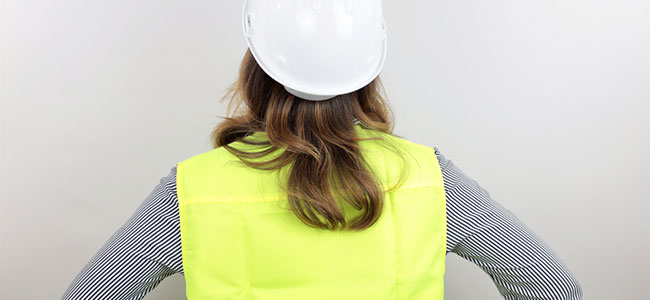
Addressing an Overlooked Danger
Why current helmet standards must be updated to account for rotational motion, a key cause of concussions.
- By Joe Brandel
- Sep 06, 2023
Those in the construction industry are responsible for building the places where we spend our lives, but they continue to face some of the greatest risks on the job. In the U.S. construction industry alone, a total of 21,400 non-fatal workplace injuries and illnesses were caused by slips, trips and falls in 2020. These types of accidents can lead not only to severe injuries but fatalities as well: Between 2003 and 2008, one of the leading causes of occupational fatalities caused by a traumatic brain injury (TBI) was falls at 29 percent.
While the Occupational Safety and Health Administration requires that head protection must be worn by employees at risk of head injury from impact, falling objects, electrical shock, or burns, construction workers are still at risk while on the job. Furthermore, where you work can have an impact on your safety as well. Workers at small construction companies with 20 employees or less are over 2.5 times more likely than those in larger companies to experience fatal TBIs.
Understanding the Risk
One of the most important steps that both employers and employees can take is to understand the risks involved in TBIs. Simply put, traumatic brain injuries are injuries that affect how the brain functions. There are three types of TBIs: mild, moderate and severe. Some types of TBIs can lead to temporary issues, such as how a person thinks, communicates, or moves, while long-term TBIs can cause permanent disability or death.
Accidents such as slips, trips and falls can be critical: When a person’s head makes an impact with the ground or an object, research shows that this typically occurs at an angle, exposing them to rotational motion. Rotational motion is the combination of rotational forces (angular acceleration) and rotational energy (angular velocity) potentially resulting from oblique impacts to the head. In instances where rotational motion is transferred to the brain, the brain can start to deform, which may cause shearing and damage to the brain’s axons or cable transmitters of the neurons.
Rotational motion can lead to diffuse injuries, including diffuse axonal injury and subdural hematoma, while linear injuries (injuries that occur from straight impacts to the head) can cause focal injuries, including fractures and contusions. It’s important to note that in most real-life accidents, both linear and rotational motion occurs, leading to a greater potential risk of injury.
This article originally appeared in the September 2023 issue of Occupational Health & Safety.